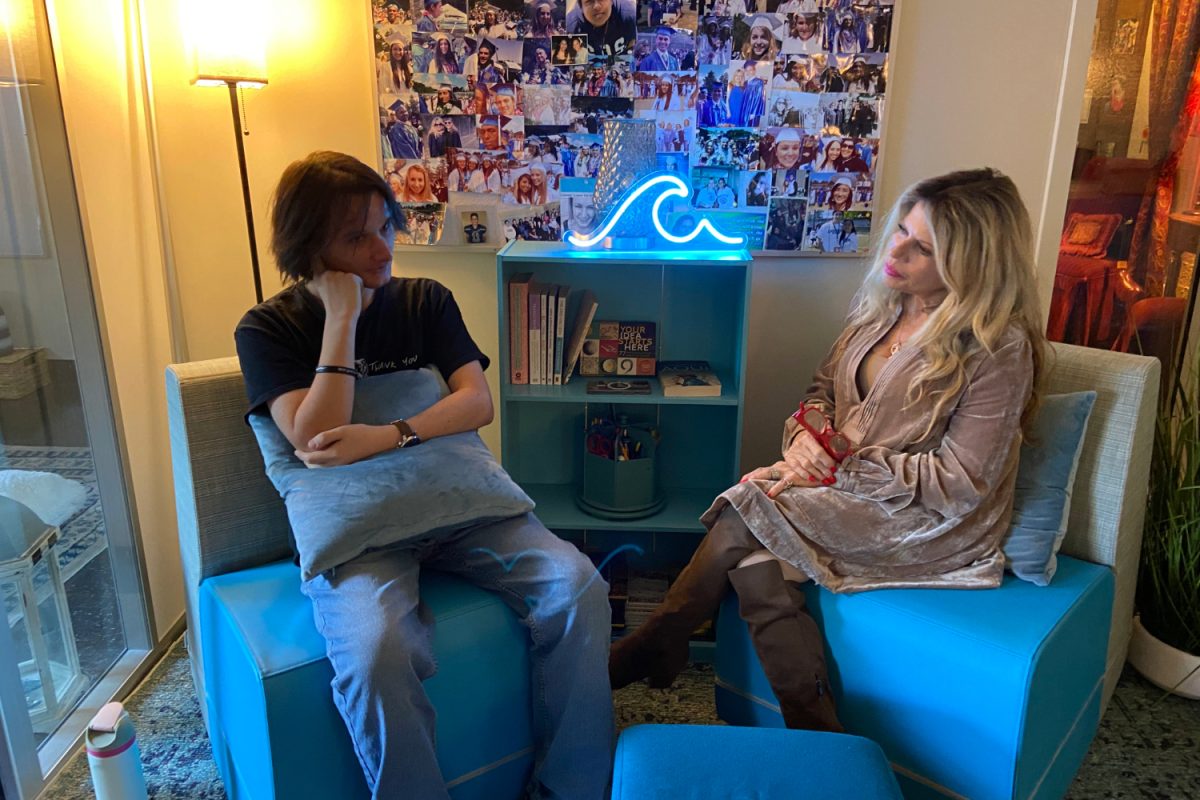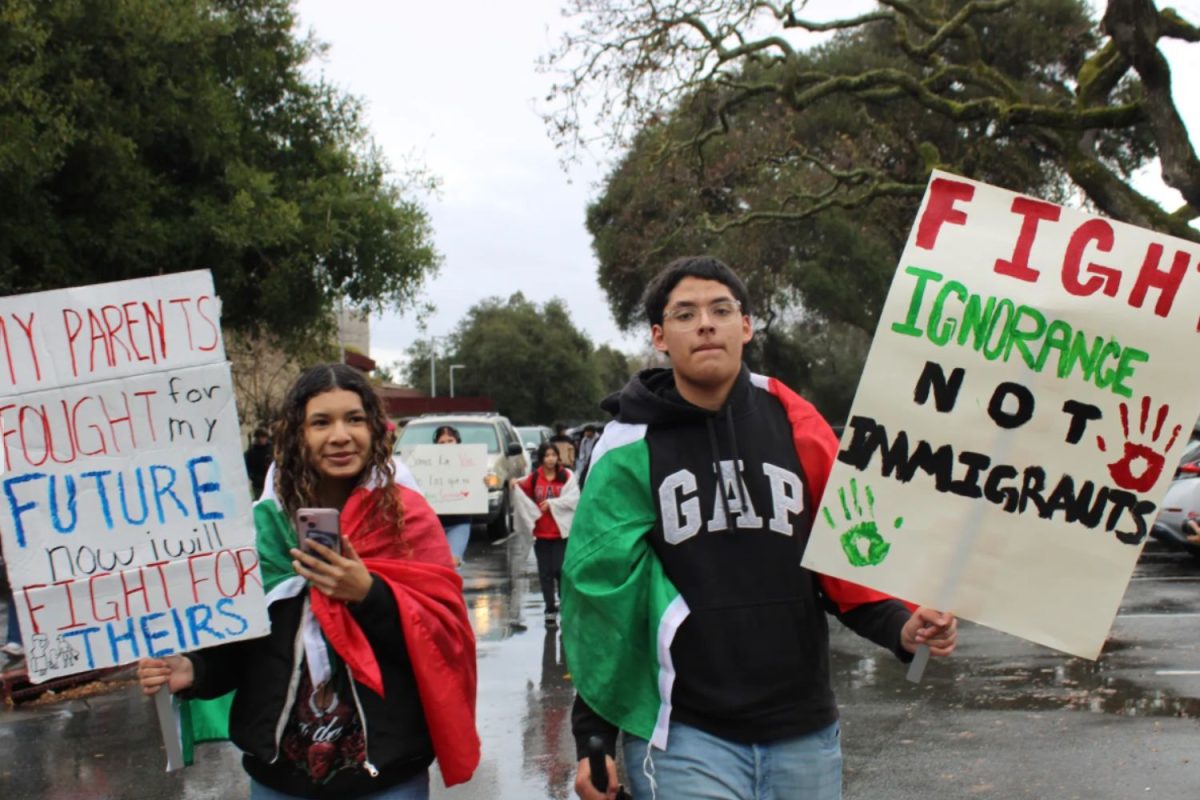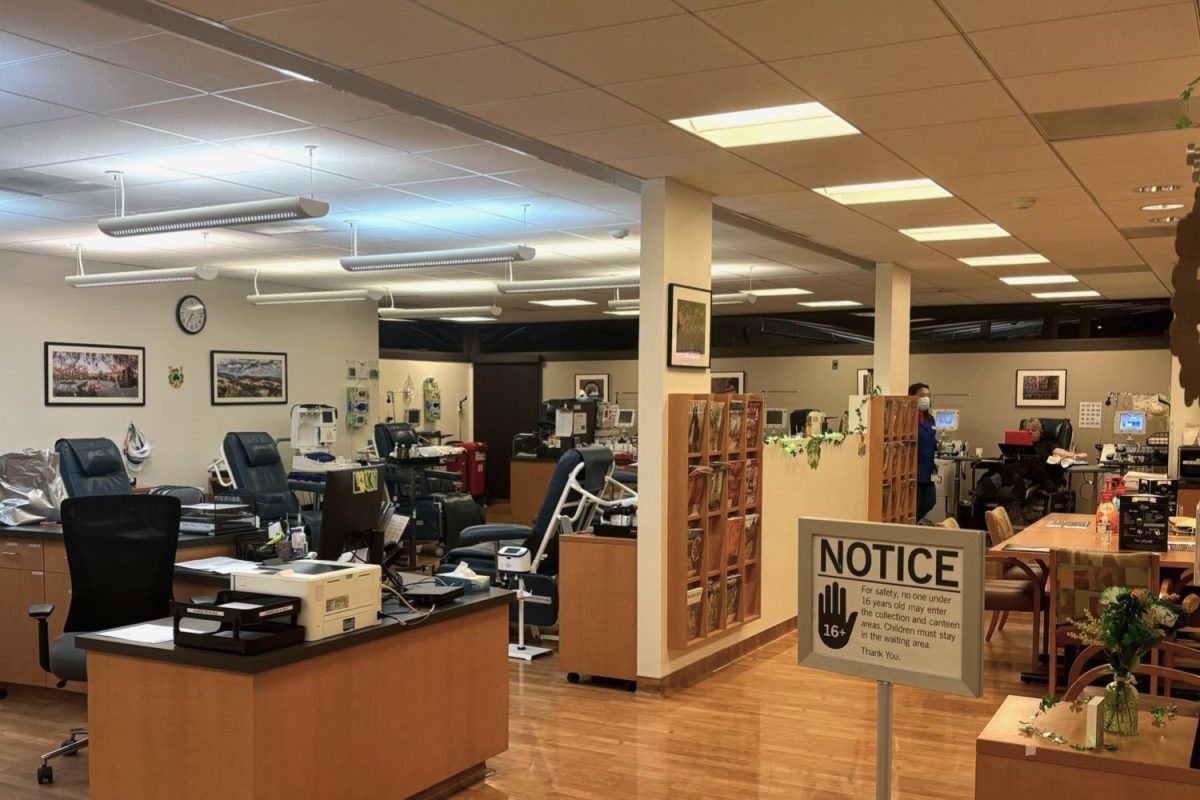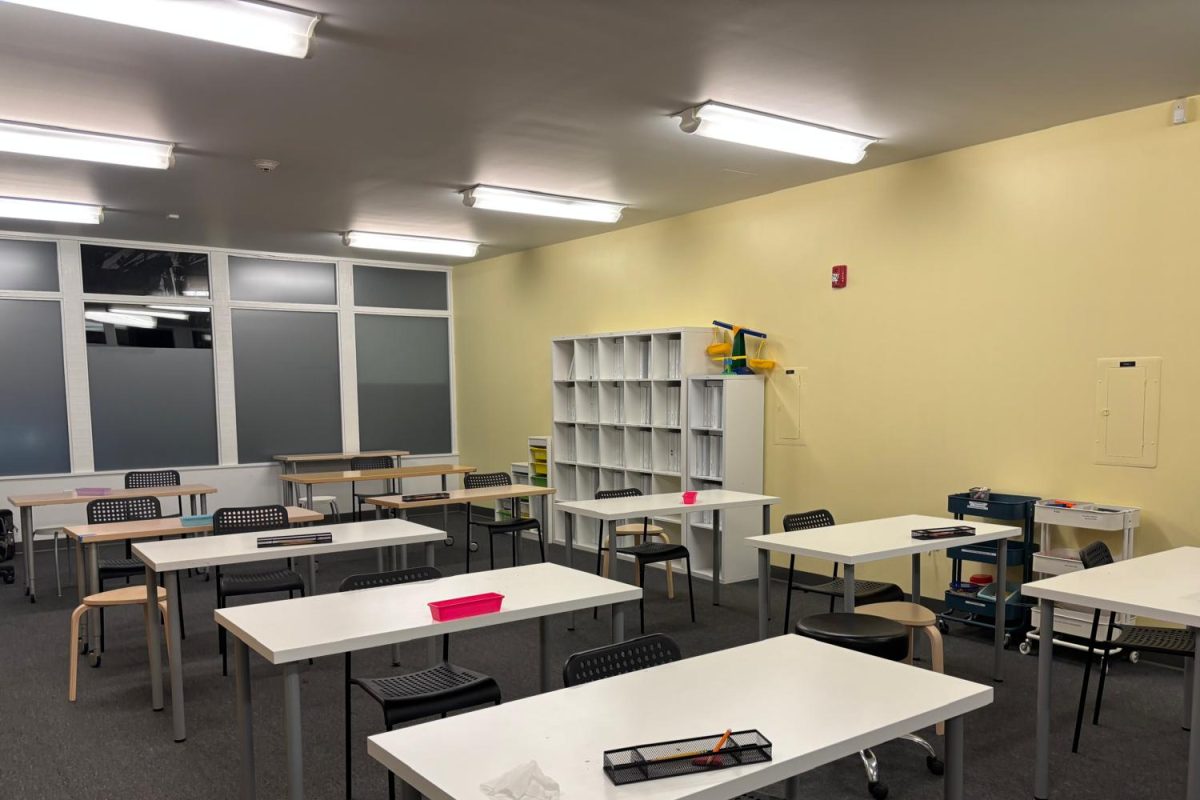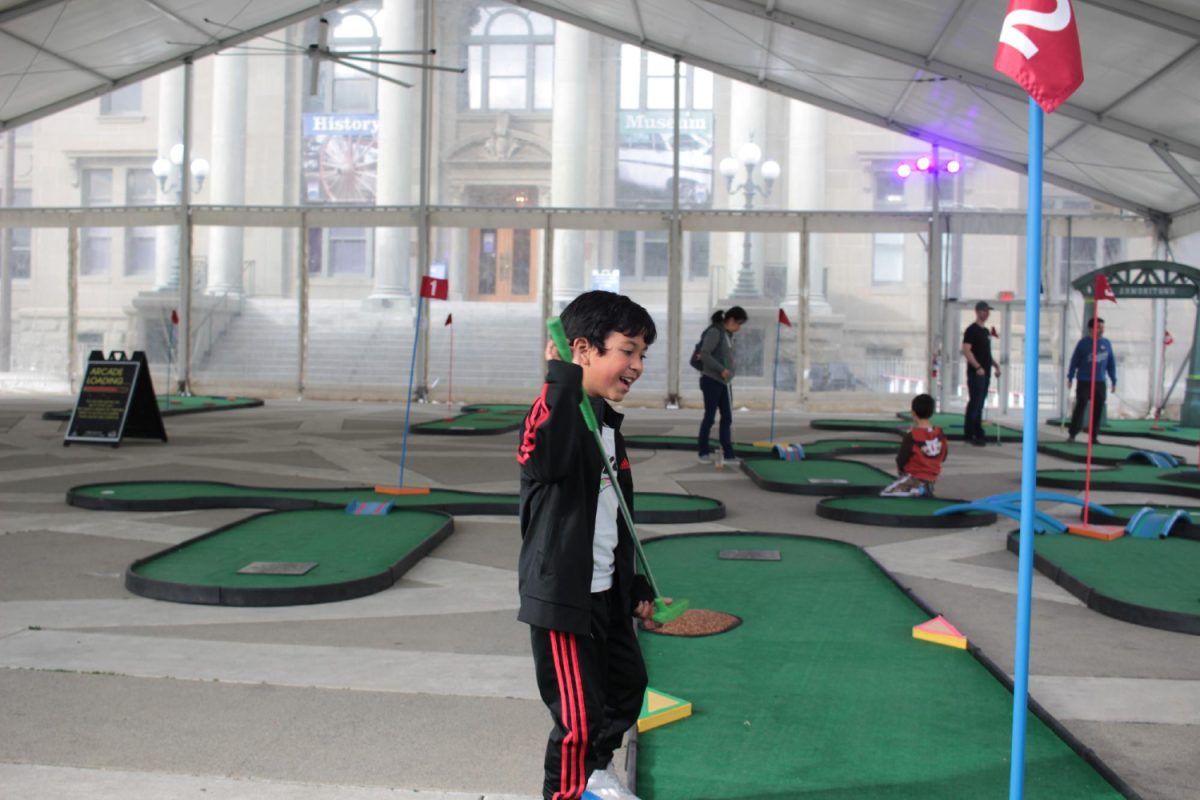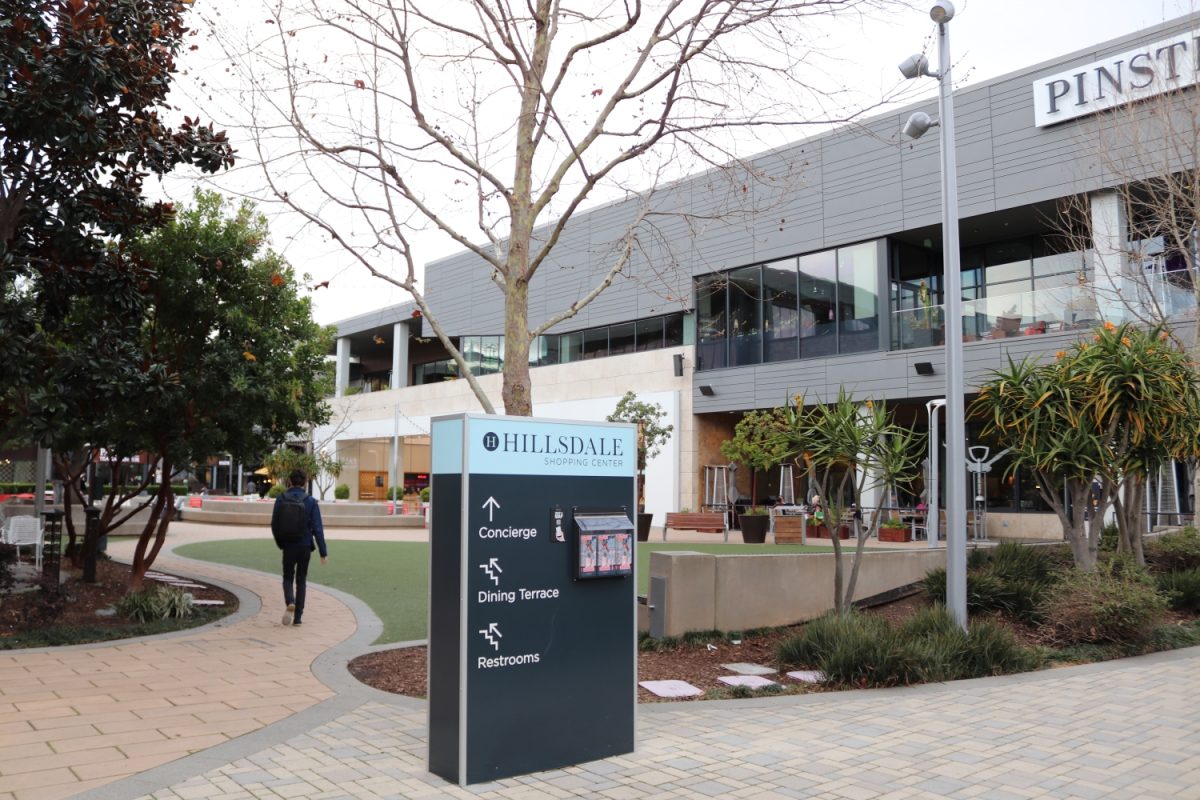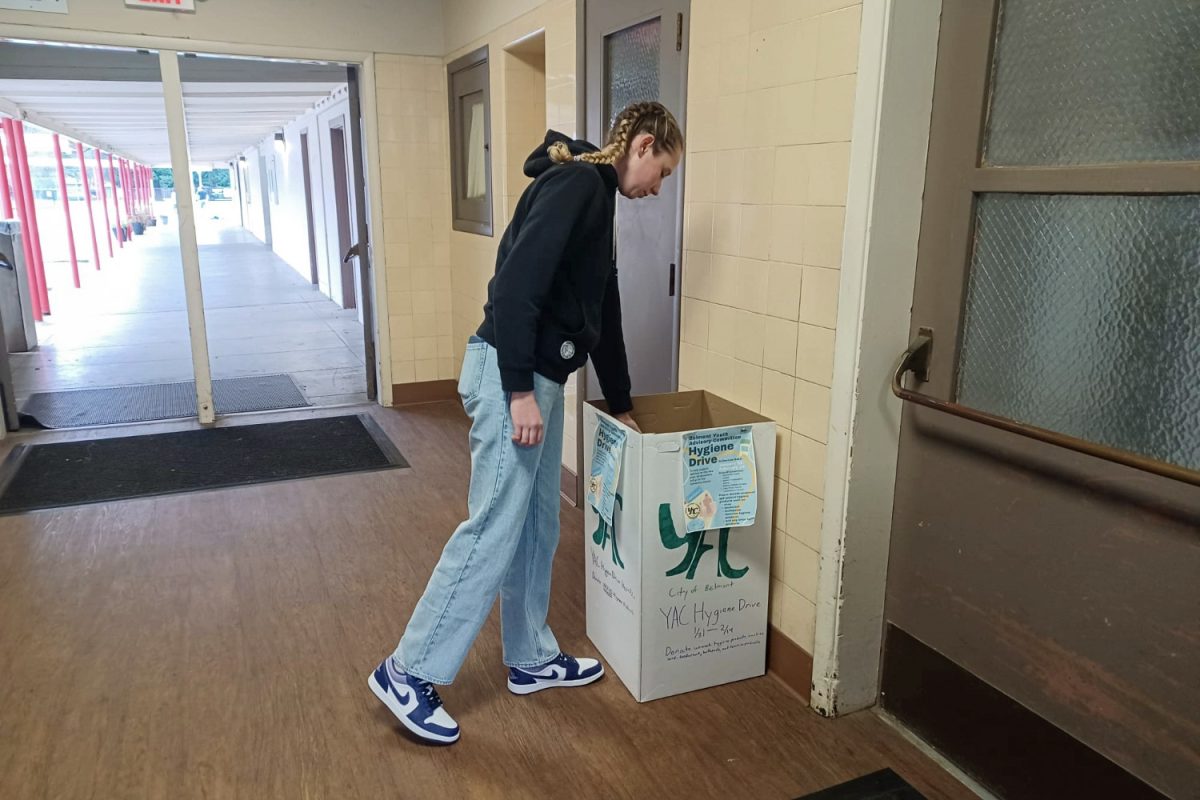The Wellness Center, among other clubs and organizations on campus, is an example of a third space: a place where people go other than home and work to connect. The term was coined by Ray Oldenburg, an urban sociologist, who argues third spaces are essential to community vitality. They’re accessible and often frequented, providing recurrent community connections. And for teenagers, their value skyrockets.
“Teenagers are going through this period of figuring out who they are. They’re shifting away from having connections with their families as much to relationships. With that independence can come this sense of isolation and feeling lost,” said Stanford Psychiatrist Dr. Tyler Prestwood. “And so it’s no surprise that that’s when loneliness peaks.”
At the Wellness Center, there are no pre-emptive hangout plans or big overhead ceiling lights. There are free burritos, seating centered for conversation, and walls crowded with old pictures. Most of all, there’s company.
“These kids are here for the same reasons. They want to make friends. They want not to be alone,” said Students Offering Support (SOS) coordinator and crisis management counselor Shelley Bustamante.
The shifting social dynamics of adolescence underscore the role of interpersonal relationships and belonging within a community. Social situations such as breakups or fights between friends or families can lead to teenagers feeling lonely or disconnected, according to Mental Health America. According to Prestwood, teenagers might feel like they aren’t truly known in their social backdrops as they try to navigate what they want and need from others.
“You’re going through this period of isolation figuring out your identity, which happens throughout your whole life. But you set your compass in your teenage years, and so that can be particularly isolating,” Prestwood said.
A survey cited by the U.K.’s Mental Health Foundation found that 40% of respondents aged 16-24 reported feeling lonely often or very often. According to Prestwood, loneliness is overcome by building communities, whether that’s through a big crowd or a few close friends.
“A lot of it comes down to people feeling lonely, validating that within themselves, and then using that to motivate themselves, to reach out and make connections and figure out what kinds of connections they want,” Prestwood said.
Connections through social media rather than in person are a potential for teenagers to consider. According to Pew Research, 46% of U.S. teenagers reported using the internet almost constantly in 2023, roughly doubling since 2015. The internet poses unique pros and cons as a ground for connection and the existence of third spaces.
“Social media extends the geographical reach and temporal reach. When people can’t travel, you can connect with people in more efficient ways,” Prestwood said.
The line between using the internet as a tool for connection and a means for isolation isn’t clear-cut. According to an article published in the AMA Journal of Ethics, “when the internet is used to enhance existing social relationships and develop new social connections, it’s a valuable tool for reducing loneliness, but when it’s used to escape from the social world and withdraw from social interactions, it will increase feelings of loneliness.”
Additionally, the absence of in-person interaction might pose a loss of someone’s overall sense of connection. During the pandemic, “online modes of social contact did not compensate for the restrictions on in-person social contact,” according to the British Sociological Association.
“Maybe someone wants to have a physical presence with somebody else and feel like they’re sharing a space with them. And sometimes online experiences don’t don’t replace that,” Prestwood said. “Social media can be both. On the one hand, you feel more connected to social groups, but on the other, it’s hard to represent who you are. Truly, it’s hard to feel seen, and it can be really difficult to feel like you’re actually connecting with anybody.”
Like the internet, third spaces can bridge challenges of transportation or money. Third spaces such as public libraries, parks, and youth groups are all generally local and free. Even in the face of more extreme challenges, third spaces can thrive.
“During COVID, I had all those kids who were depressed meet me on the softball field. It was six feet apart. I brought food, frisbees, and beach balls, and we just hung out. And those kids became friends for life,” Bustamante said.
The significance of these interpersonal relationships is emphasized by their impacts. According to BMC Psychiatry, good interpersonal relationships significantly impact emotional well-being and may alleviate depression and anxiety.
“Community is really important because it’s how you feel like you belong,” said Associated Student Body (ASB) Officer Roya Jamasbi.
Part of ASB’s mission is to give students non-academic motivation to come to school through school spirit and culture, according to Jamasbi. The ASB room can also act as an accessible third space during lunch.
“A lot of people come in, even people who aren’t in ASB. The ASB room is a really good place to hang out,” Jamasbi said.
The ASB room isn’t singular in its role as a third space for students. Other campus clubs, afterschool organizations, and impromptu social locations like the quad can foster social connections. Third spaces for the wider community include local libraries, parks, volunteer organizations, and sports clubs.
“One of the things that helps the most is when you feel when a person feels seen by others, seen as an individual with their own preferences, the things about themselves that they value,” Prestwood said. “And that’s kind of the root of community, is people knowing you. Knowing things that are particular to you and holding that with you.”

